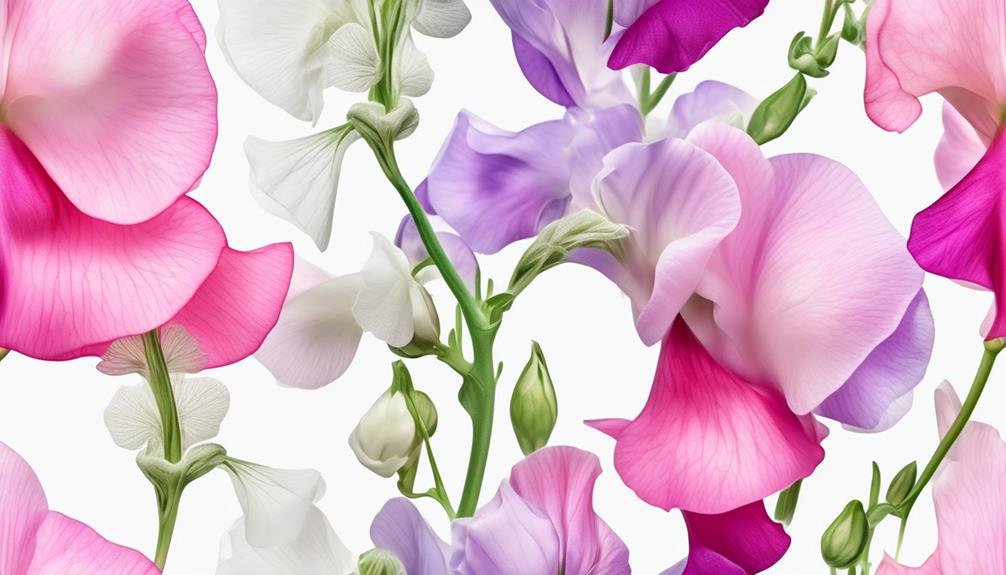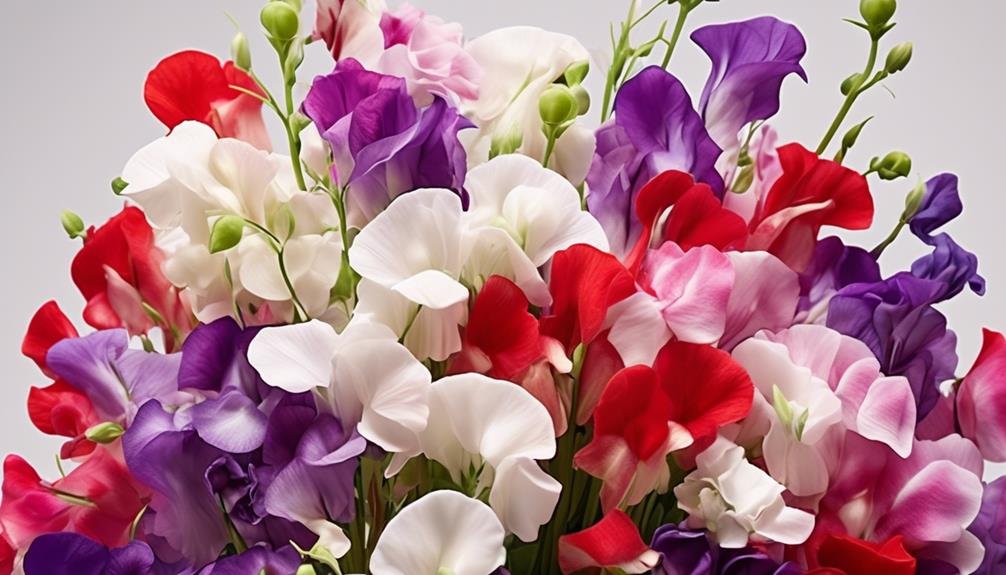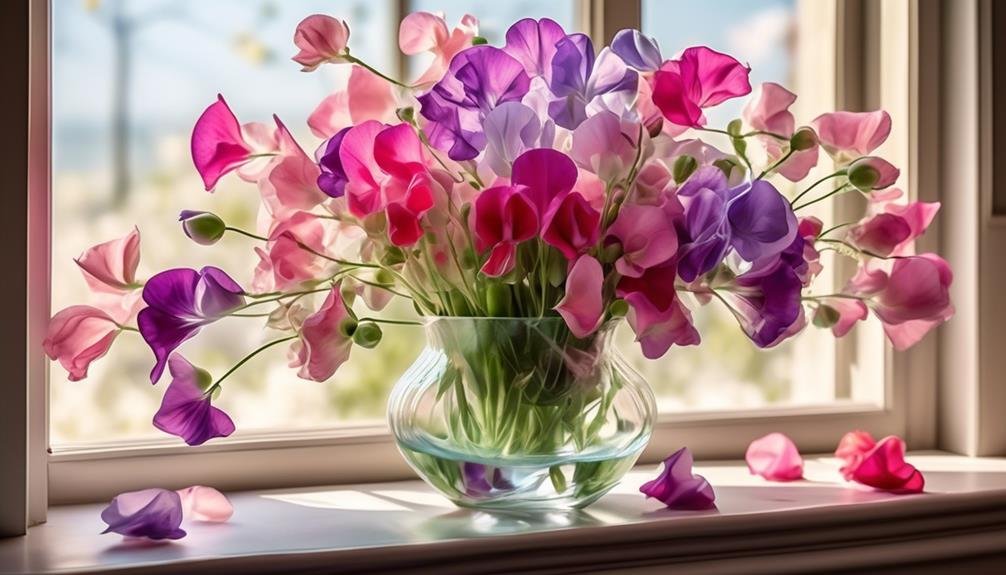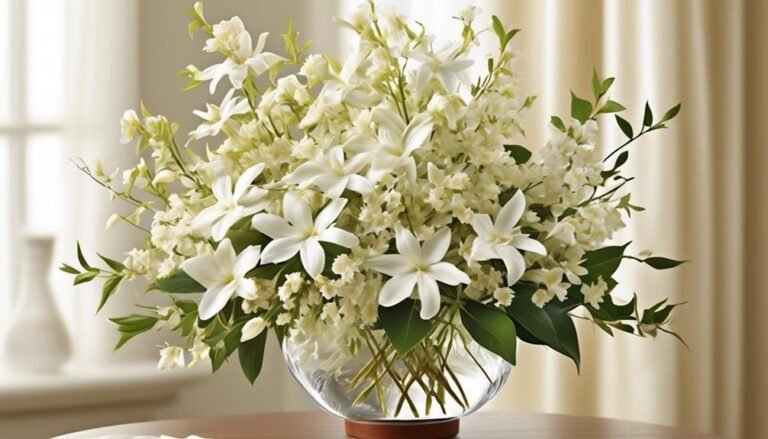Popular Types of Florist Flowers – Sweet Pea
Sweet peas are a popular choice for both florists and garden enthusiasts due to their delicate beauty and enchanting fragrance. These charming blooms are known for their scientific background, physical characteristics, and seasonal availability, which make them a staple in many floral arrangements.
Scientific Background:
Sweet peas, scientifically known as Lathyrus odoratus, belong to the Fabaceae family. They are annual flowering plants that are native to Sicily, Cyprus, and southern Italy. The name 'odoratus' is derived from the Latin word for 'fragrant,' highlighting the captivating scent that sweet peas are renowned for.
Physical Characteristics:
Sweet peas are characterized by their vibrant and varied colors, including shades of pink, purple, white, and blue. They typically grow on climbing vines, producing delicate and ruffled flowers that add a touch of elegance to any arrangement. The blooms are also known for their unique butterfly-like shape, making them visually appealing and versatile for different design styles.
Seasonal Availability:
Sweet peas are commonly available during the spring and early summer months, making them a popular choice for seasonal floral displays. They thrive in cool weather and are often used to add a pop of color and fragrance to springtime bouquets and garden landscapes.
In conclusion, sweet peas are beloved for their alluring fragrance, stunning colors, and seasonal availability, making them a timeless favorite for floral design and gardening enthusiasts.
Scientific Name

Lathyrus Odoratus, commonly known as sweet peas, is a species within the Lathyrus genus of plants. The scientific name is crucial for accurately identifying and categorizing sweet peas. It distinguishes them from other species within the Lathyrus genus, such as the perennial sweet pea (Lathyrus latifolius) or the everlasting pea (Lathyrus latifolius).
Understanding the scientific name is essential for botanists, horticulturists, and enthusiasts who seek to differentiate between various Lathyrus species. It provides insight into the genetic and evolutionary relationships between sweet peas and other members of the Lathyrus genus. Furthermore, it aids in the conservation and preservation of sweet pea species, enabling researchers to accurately document and track their distribution, ecology, and genetic diversity.
Background History
Sweet peas, also known as Lathyrus Odoratus, originated in the eastern Mediterranean and have a fascinating history tied to their introduction to England and their symbolism in the Victorian era. These vibrant and fragrant flowers require well-draining soil and a sunny location to thrive, and they're often grown with support structures like trellises or fences. Regular deadheading of faded flowers encourages more blooms and prolongs the flowering period.
In England, sweet peas are associated with delicate pleasures and are often exchanged as tokens of appreciation and gratitude. During the Victorian era, they held a significant place in the language of flowers, symbolizing heartfelt departure or 'goodbye.' Across various cultures, sweet peas are seen as a symbol of blissful pleasure and are used in floral arrangements to convey joy and happiness.
The introduction of sweet peas to England by a Sicilian monk in the 17th century marked the beginning of their popularity in European gardens. The enduring appeal of sweet peas as a charming and meaningful floral choice is evident in their rich history and cultural symbolism.
Physical Description

Sweet peas, scientifically known as Lathyrus Odoratus, are climbing plants native to the eastern Mediterranean. They're cherished for their delicate tendrils and butterfly-shaped blooms, which come in a wide array of colors, each carrying its own symbolism in different cultures. For instance, white sweet peas symbolize peace and purity, pink ones represent happiness and joy, and red sweet peas are associated with romantic love and passion.
These charming flowers are cultivated for their ornamental value, and their graceful appearance ranges from soft pastels to vibrant and striking hues.
Cultivating sweet peas involves providing sturdy support for their climbing nature, ensuring proper watering, and maintaining well-drained, fertile soil. The blooms are characterized by a sweet fragrance, adding to their appeal in various cultural and horticultural contexts. They're often used in floral arrangements to add elegance and charm to any setting.
Understanding the physical attributes and symbolic meanings of sweet peas enhances their appeal, making them a versatile choice for conveying different emotions and sentiments.
Colours and Characteristics
Sweet peas come in a wide range of vibrant hues, including whites, creams, reds, pinks, and mauves, offering a spectrum of emotions for floral arrangements and garden landscapes.
Some varieties also feature distinctive patterns such as speckles, stripes, ripples, or flakes, adding a touch of uniqueness and individuality.
Burgundy speckled varieties like Nimbus can be particularly eye-catching, evoking a feeling of sophistication and elegance.
To maintain their vivid colors and unique characteristics, sweet peas require well-drained soil, ample sunlight, and regular watering.
These qualities make sweet peas popular for floral arrangements, event decorations, and garden borders, adding charm and elegance to any setting.
Varieties Available

Sweet peas come in a wide range of vibrant hues and unique characteristics, making them perfect for floral arrangements and garden landscapes. Some popular varieties include 'Matucana', 'Kingfisher', and 'St George', known for their breathtaking color combinations. If you prefer a standout mid-blue variety with a strong scent, 'Just Julia' is an excellent choice. 'Erewhon' features stunning bicolour flowers, while 'Mollie Rilstone' is known for its pretty picotee flowers, making them unique and attractive options for floral arrangements.
For exhibition or show bench displays, consider varieties such as 'White Supreme' and 'King Edward VII', which are renowned for their long stems and good fragrance. These award-winning varieties have been honored with the Royal Horticultural Society's prestigious Award of Garden Merit (AGM).
Whether you want to create a vibrant garden landscape or stunning floral arrangements, there's a perfect sweet pea variety for every preference and purpose. By selecting the right varieties and implementing proper growing techniques, you can enjoy the beauty and fragrance of sweet peas in various settings.
Seasonal Availability
Sweet peas are most abundant in late spring to early summer, especially in cooler temperate climates. The local climate plays a significant role in their availability, with cooler regions typically having a longer growing season. Well-drained soil with good organic content is essential for their healthy growth, and proper cultivation techniques, such as providing support for climbing varieties and regular watering, are crucial for promoting their abundance.
Factors such as temperature, soil conditions, and cultivation practices can significantly affect the duration of their availability. Consulting local florists or growers can provide valuable insights into the best time to enjoy these beautiful flowers in your area.
Care Tips

Sweet peas thrive in a sunny location with support for their tall stems. To avoid overwatering, water the plants at the base in the morning, ensuring consistent moisture while preventing root rot. Regular deadheading of flowers encourages continuous blooming.
Fertilize sweet peas with a balanced liquid fertilizer every two to three weeks during the growing season. Use peat-free compost or add organic matter to improve soil structure and nutrient content.
Keep an eye out for pests like aphids and diseases such as powdery mildew, treating them promptly with appropriate measures.
Are Gladiolus Flowers a Suitable Companion for Sweet Pea in a Floral Arrangement?
When creating a floral arrangement, consider using gladiolus flowers as they complement sweet peas beautifully. These types of florist flowers add height and elegance to the arrangement, while the sweet peas provide a delicate and fragrant touch. Together, they create a stunning and harmonious combination in any bouquet.
Conclusion
The sweet pea, scientifically known as Lathyrus odoratus, is a popular choice for florists and garden enthusiasts. These delicate flowers come in a variety of colors and emit a delightful fragrance, making them a charming addition to any floral arrangement or garden.
Seasonal Availability:
Sweet peas are typically available in the spring and early summer months. They thrive in cool weather and can be grown in both garden beds and containers.
Care Tips:
To ensure the successful cultivation of sweet peas, it's important to provide them with well-draining soil, ample sunlight, and regular watering. Additionally, providing support for their climbing nature is essential for their growth.
Variety of Colors and Fragrances:
Sweet peas come in a wide array of colors, including pink, purple, white, and red, among others. Each color variation emits its own unique fragrance, adding to the overall charm of these blooms.
With the right care and attention, sweet peas can thrive and bring a touch of elegance to any floral display or outdoor space.






